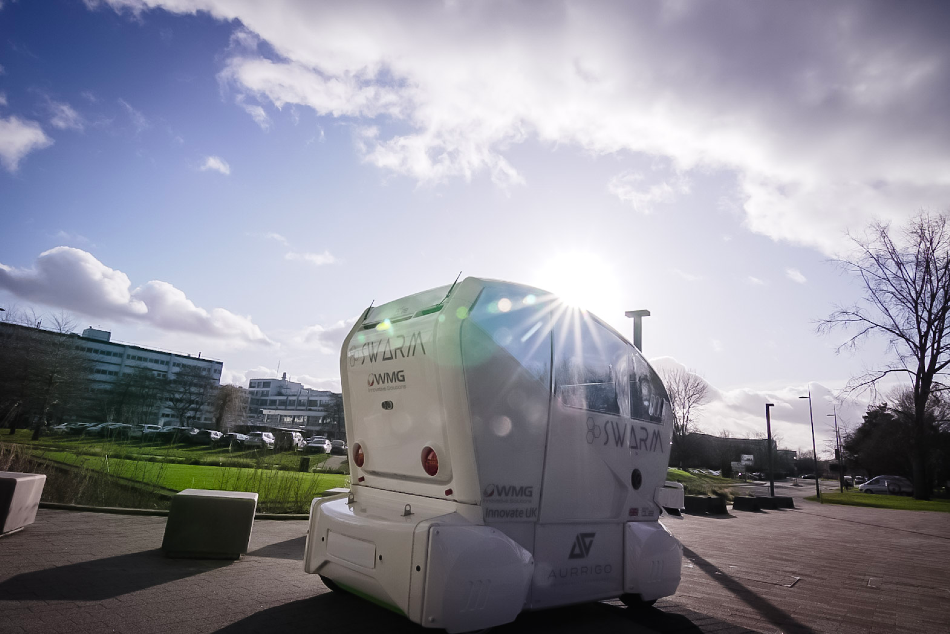Jan 31 2020
Researchers from the Warwick Manufacturing Group at the University of Warwick collaborated with Aurrigo and Milton Keynes Council to enable swarms of autonomous pods developed in Coventry to hit the road for the first time in the world.

Image Credit: University of Warwick.
The idea of driverless pods is now practical than prospective. Thus, these vehicles have reached closer to being used regularly, as the vehicles now have the ability to assist each other to drive and travel through pedestrian areas around people.
People, in general, have accepted the swarming pod concept, where the eventual goal is to use an app to welcome a pod, or a group of pods while traveling in groups. This could be the future development of public and personal transport.
The pods have been developed for shared spaces and pedestrian areas; thus, it would be possible to use public transport on highways, while the pods are used as a “first and last mile service.”
The team at WMG applied swarming skills that are generally used by insects and birds to combine swarm intelligence with the pods.
The positive results of “swarming” implies that pods now have the ability to plan themselves to create a “platoon,” following one another when it is feasible. This reduces the demand for a supervisor per pod, as well as the number of movements of an individual vehicle. It is anticipated that, in future, a supervisor will be able to watch various pods and report any unpredicted behavior.
Moreover, this technology can also allow the pods, working within a group, to refine their behavior automatically to fulfill future passenger requirements by spreading themselves in a city to the places where they will be very much possibly needed.
The SWARM algorithm has been tested and is proven to be effective and reliable. The ability to make pods ‘swarm’ together like a group of bees or birds, means they can coordinate with each other, bringing them one step closer to our streets.
Dr Roger Woodman, Associate Professor in Human Factors, WMG, University of Warwick
According to Simon Brewerton, Chief Technology Officer at Aurrigo, “The collaborative SWARM algorithms have been developed to enable our autonomous vehicles to optimise their own trip schedules, so they deliver the optimum efficiency from a fleet of vehicles.”
The swarming technology is very exciting and has the potential to operate large fleets of remotely supervised autonomous vehicles in a safe and scalable way. Interest in this will be huge.
Simon Brewerton, Chief Technology Officer, Aurrigo